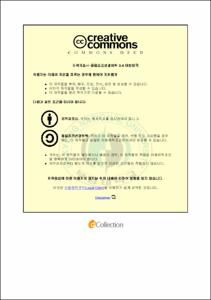Optimization of Coagulation Process for a Drinking Water Treatment Using Response Surface Methodology(RSM)
- Alternative Title
- 정수처리 시 응집공정의 최적화를 위한 반응표면분석법의 이용
- Abstract
- This study aimed at optimizing coagulation conditions (coagulant dose and coagulation pH) of removal process of turbidity and TOC/DOC from synthetic water and Nakdong river water. Polyaluminum chloride (PACl) and alum were used as coagulants. The experiments were carried out using jar tests and response surface methodology (RSM) as a systematic experimental design which was applied to optimize the coagulation process. A central composite design (CCD), which is the standard design of RSM, was used to build a response surface model and evaluate the effects and interactions of the two factors, such as coagulant dose and pH, on removal effectiveness. A high value of R², the insignificance of lack of fit of the models and the appropriate residual graphical indicated that the models were adequate. The removal mechanisms of turbidity and TOC/DOC were different. Therefore, the optimum conditions which yielded optimum removal effectiveness were hence different. When using synthetic water, a compromise between the two responses, the maximum amount of 92.0 % turbidity removal and 39.5 % TOC removal was obtained at alum dose of 0.14 mM (as Alum) and pH 7.6. With Nakdong river water as raw water, 91.3% turbidity and 31.3% DOC was removed by using 0.11 mM (as Al) PACl at pH 7.4, while 86.5% turbidity removal and 34% DOC removal were obtained under the conditions of 0.15 mM (as Al) alum and pH 6.75. Confirmation experiment results were found to be close to the prediction. This demonstrates the benefits of the approach based on the RSM in achieving maximum amount of information in a short period of time and with the least number of experiment required.
- Issued Date
- 2009
- Awarded Date
- 2009. 8
- Type
- Dissertation
- Publisher
- 부경대학교 대학원
- Affiliation
- 부경대학교 대학원
- Department
- 대학원 환경공학과
- Advisor
- 강임석
- Table Of Contents
- CHAPTER 1 INTRODUCTION = 1
CHAPTER 2 LITERATURE REVIEW = 3
2.1. Introduction = 3
2.2. Properties of particles in water = 3
2.2.1. Physicochemical properties = 4
2.2.1.1. Particle size = 4
2.2.1.2. Particle-solvent interactions = 5
2.2.2. Electrochemical properties = 5
2.2.2.1. Particle surface charge = 5
2.2.2.2. Electrical double layer = 8
2.2.2.3. Zeta potential = 9
2.2.3. Particle stability = 10
2.2.4. Compression of the electrical double layer = 12
2.3. Coagulant chemistry = 13
2.4. Coagulation mechanisms = 16
2.4.1. Coagulation of colloidal particles = 16
2.4.1.1. Charge neutralization = 17
2.4.1.2. Sweep floc = 18
2.4.2. Coagulation of natural organic matter = 19
2.4.2.1. Charge neutralization = 19
2.4.2.2. Adsorption = 20
2.4.2.3. Complexation / precipitation = 20
2.4.2.4. Combined mechanism: neutralization and adsorption = 20
2.4.2.5. Mechanisms for alum coagulation of humic substances = 20
2.4.3. Comparison of alum coagulation of colloidal particle and NOM = 21
2.5. Effects of different variables on coagulation efficiency = 22
2.5.1. Raw water characteristics = 22
2.5.1.1. Concentration of colloidal particles = 22
2.5.1.2. Natural organic matter = 23
2.5.1.3. pH, salts and alkalinity = 24
2.5.1.4. Temperature = 24
2.5.2. Coagulation conditions = 25
2.5.2.1. Coagulant dose = 25
2.5.2.2. Coagulation pH = 27
2.5.2.3. Mixing = 27
2.6. Optimizing coagulation process = 28
2.6.1. One-Factor-At-A-Time (OFAT) = 28
2.6.2. Response surface methodology (RSM) = 29
2.6.2.1. Concept of RSM = 29
2.6.2.3. Building the models = 32
CHAPTER 3 MATERIALS AND METHODS = 33
3.1. Materials = 33
3.1.1. Characteristics of raw water = 33
3.1.1.1. Synthetic water (SW) = 33
3.1.1.2. Nakdong river water (NRW) = 33
3.1.2. Preparation of chemicals = 34
3.1.2.1. Coagulants = 34
3.1.2.2. pH adjusting chemicals = 35
3.2. Experimental methods = 35
3.2.1. Jar tests = 35
3.2.1.1. Jar test procedures = 35
3.2.1.2. Analysis methods and instruments = 36
3.2.2. Design of experiments and data analysis = 38
CHAPTER 4 RESULTS AND DISCUSSION = 39
4.1. Building the response surface models = 39
4.1.1. Experimental domain = 39
4.1.2. CCD for 2 factors: coagulant dose and coagulation pH = 40
4.2. Fitting the models = 45
4.2.1. Synthetic water = 45
4.2.2. Nakdong river water = 45
4.3. Validation the models = 46
4.3.1. Graphical residual analysis = 47
4.3.2. Numerical analysis = 52
4.4. Coagulation process analysis = 55
4.4.1. Synthetic water = 55
4.4.2. Nakdong river water = 62
4.4.2.1. Optimization of the turbidity removal efficiency = 63
4.4.2.2. Optimization of the DOC removal efficiency = 69
4.4.2.3. Optimization of both turbidity and DOC removal efficiency = 75
CHAPTER 5 CONCLUSIONS = 78
REFERENCES = 80
ACKNOWLEDGEMENTS = 84
- Degree
- Master
- Files in This Item:
-
-
Download
 Optimization of Coagulation Process for a Drinking Water Treatment Using Response Surface Methodolog.pdf
기타 데이터 / 29.18 MB / Adobe PDF
Optimization of Coagulation Process for a Drinking Water Treatment Using Response Surface Methodolog.pdf
기타 데이터 / 29.18 MB / Adobe PDF
-
Items in Repository are protected by copyright, with all rights reserved, unless otherwise indicated.